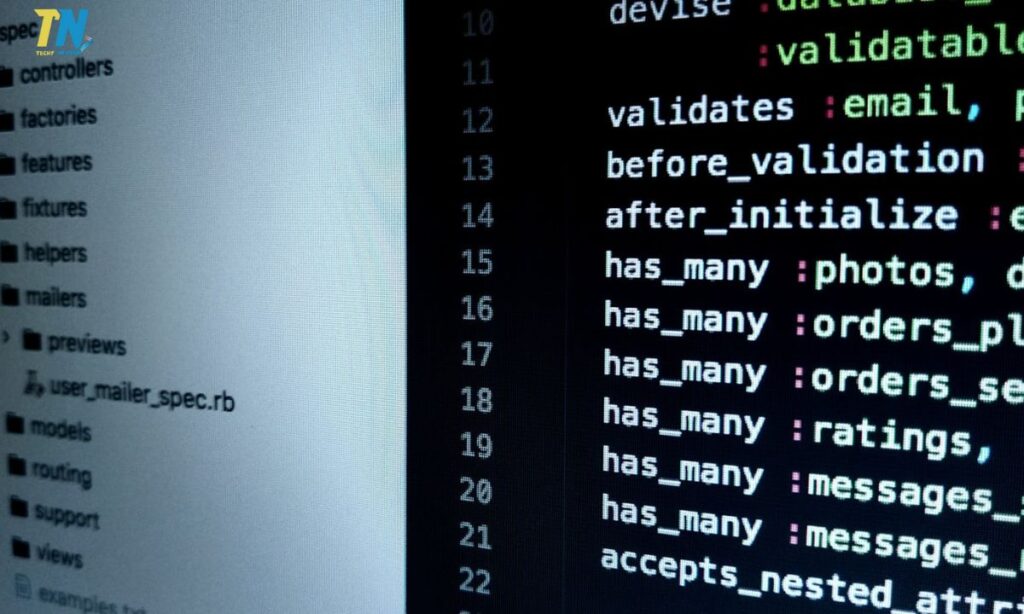Decoding Error Code FintechAsia helps users understand and fix common fintech errors. These errors disrupt transactions, API connections, and data synchronization.
Quick troubleshooting ensures smooth operations and better user experience. This guide explains causes, solutions, and prevention tips.
What is the Error Code of FintechAsia?

Error codes in FintechAsia appear during transactions or API integrations. They signal problems within the platform. Users should recognize these codes to take appropriate action.
These errors can arise from various issues. For example, authentication problems may occur, preventing users from logging in. Understanding what each code means is crucial for smooth operations.
Knowing the error codes helps users avoid frustration. It also ensures that developers can fix issues quickly. This knowledge builds trust in fintech services.
Key Points About Fintech Asia Error Codes
FintechAsia error codes highlight transaction or connectivity problems. They can result from payment failures, API issues, or compliance errors.
Understanding these codes makes troubleshooting easier. Quick fixes often include verifying details and system checks.
Card Decline Codes
Card decline codes indicate that a transaction failed. This can happen for several reasons. It might be due to insufficient funds or incorrect card details.
When a card is declined, users should check their account. They should also verify their card information. This quick check can save time and effort.
Local Payment Method-Specific Codes
Different regions have specific error codes. These codes relate to local payment methods. Understanding these can help users navigate transactions better.
For instance, a local bank might have a unique code for errors. Knowing these can prevent confusion during payment processing. It also supports better communication with customer service.
Bank Network Errors
Bank network errors can disrupt transactions. These errors often occur due to connectivity problems. Users should ensure they have a stable internet connection.
If a bank network error arises, it’s important to wait and try again. Users can also contact their bank for assistance. This helps in resolving any ongoing issues.
API Error Codes
API error codes indicate problems with integrations. These issues can affect how applications communicate. Proper API credentials verification is necessary to avoid these errors.
Developers should regularly test their API connections. This practice improves platform reliability. It also enhances user experience significantly.
Read This Blog: Tech Games Defstartup: Innovate & Win Games to Flourish Your Startup
Examples of Fintech Asia Error Codes
FintechAsia error codes vary by situation. Common ones include card declines, network timeouts, and API issues.
For instance, Error 401 means unauthorized access, and Error 500 signals a server issue. Knowing these codes helps in quickly identifying problems.
Common Error Codes in FintechAsia
Understanding common error codes is essential. Here are some examples of frequent errors users encounter:
| Error Code | Description | Cause |
| 500 | Internal Server Error | Server overload or bugs |
| 404 | Page Not Found | Broken or incorrect URLs |
| 401 | Unauthorized Access | Invalid login credentials |
| 403 | Forbidden Access | Insufficient user permissions |
| 408 | Request Timeout | Network delays |
These codes can help users identify issues quickly. It also guides them on the next steps to take.
Error Code 500: Internal Server Error
This error indicates a problem with the server. It usually means something went wrong on the backend. Users should try refreshing the page or waiting a moment.
If the error persists, contacting customer support is advisable. They can provide specific solutions for this issue. Regular software updates can also help prevent this error.
Error Code 404: Page Not Found
A 404 error means the requested page is not available. This could happen if a link is broken or the page has been removed. Users should check the URL for any mistakes.
If the error continues, navigating back to the homepage may help. Users can also use the site’s search feature. This error usually doesn’t impact transactions directly.
Error Code 401: Unauthorized Access
This error occurs when login credentials are incorrect. Users should ensure they enter the right username and password. If issues persist, resetting the password might be necessary.
This error emphasizes the importance of strong authentication. Enabling multi-factor authentication (MFA) can enhance security. It also helps in preventing unauthorized access.
Causes of Error Code FintechAsia

Errors in FintechAsia arise from weak networks, software bugs, or integration mistakes. Server overloads during peak times also contribute. Incorrect user inputs, like wrong credentials, are another common reason.
Network Connectivity Issues
Network connectivity issues are a common cause of errors. An unstable connection can disrupt transactions. Users should check their internet speed regularly.
A reliable connection enhances overall user experience. If problems occur, consider switching to a wired connection. This can sometimes resolve connectivity problems.
Server Overload
Server overload can lead to various error codes. High traffic may cause slow responses or failures. It’s crucial for platforms to manage their server load effectively.
Load balancing techniques can help distribute traffic. This ensures that no single server is overwhelmed. Proper server management improves platform reliability.
Software Bugs and Glitches
Software bugs can lead to unexpected errors. These glitches may arise from recent updates or changes. Regular quality assurance and testing are vital to catch these issues early.
Developers should prioritize fixing bugs promptly. This enhances user trust in fintech services. A smooth experience keeps users engaged and satisfied.
User Input Errors
User input errors can cause many problems. Mistakes while entering data can lead to failed transactions. It’s important to double-check information before submission.
Educating users about common errors can help. Simple prompts can guide them in entering correct information. This reduces frustration and enhances the user experience.
Integration Problems
Integration problems can arise during API setup. Incorrect configurations lead to error codes. Developers should ensure that APIs are set up according to guidelines.
Regular testing of integrations helps identify issues. This proactive approach enhances overall functionality. It also supports seamless user interactions.
Troubleshooting Error Code FintechAsia

Fixing FintechAsia errors starts with basic checks. Ensure your internet is stable and credentials are correct.
Look for server updates or maintenance announcements. If issues persist, contact customer support with detailed error information.
System Checks and Maintenance
Regular system checks are essential for preventing errors. Maintenance ensures that all components function correctly. Platforms should schedule updates to keep systems running smoothly.
Routine checks can identify potential issues before they escalate. This proactive approach minimizes disruptions for users. A well-maintained system enhances trust in the platform.
Load Balancing
Load balancing is critical for managing traffic. It distributes incoming requests evenly across servers. This prevents overload on any single server.
Effective load balancing improves performance. It ensures users experience fewer errors during peak times. This strategy enhances overall platform reliability.
Quality Assurance and Testing
Quality assurance is vital in fintech. Regular testing helps identify bugs and issues. This process ensures that software updates do not introduce new problems.
Developers should implement thorough testing protocols. This minimizes the risk of errors reaching users. A robust quality assurance framework enhances user trust.
Enhancing User Interface
A user-friendly interface can reduce errors. Simplifying navigation helps users find what they need easily. Clear instructions and prompts can prevent common mistakes.
Investing in UI design improves the overall experience. Users are more likely to engage with a platform that is easy to use. A seamless interface enhances satisfaction and trust.
Also Read This Blog: BetterThisCosmos Post BetterThisWorld: A Vision for Change
Impact of Error Code FintechAsia on User Experience
Error codes can significantly disrupt user experience. They create confusion and frustration. Users expect smooth transactions and quick resolutions.
Frequent errors can lead to a loss of trust. Users may hesitate to use a platform with constant issues. Maintaining reliability is crucial for user retention.
Addressing errors promptly enhances user satisfaction. Quick resolutions show users that their concerns matter. This builds a positive reputation for the platform.
Preventive Measures for Error Code FintechAsia

To prevent errors, keep software updated and monitor systems regularly. Ensure strong internet connectivity and follow API setup guidelines. Educating users on correct usage also helps avoid common mistakes.
Regular Software Updates
Keeping software updated is essential. Updates often include security patches and bug fixes. Regular updates can prevent many common errors.
Platforms should establish a schedule for updates. This proactive measure enhances overall system stability. It also keeps users informed about improvements.
Monitoring and Prevention
Monitoring systems can identify potential issues early. Real-time monitoring allows for quick responses. This helps prevent errors from reaching users.
Implementing preventive measures boosts platform reliability. Continuous monitoring enhances user trust. Users feel more secure when they know issues are handled swiftly.
User Education
Educating users about common errors is beneficial. Providing guides can help them navigate issues. Knowledgeable users are less likely to encounter problems.
Clear communication about potential errors fosters trust. Users appreciate platforms that prioritize education. This approach enhances the overall user experience.
Frequently Asked Questions
What causes API integration issues?
Incorrect setup or expired API keys are common causes.
Can I lose money due to transaction errors?
No, failed transactions usually leave funds untouched. Verify with your provider.
How do I ensure regulatory compliance?
Follow platform guidelines and local financial laws.
Does network stability affect error rates?
Yes, unstable connections lead to errors. Ensure reliable internet access.
Are software updates necessary?
Yes, updates fix bugs and improve platform reliability.
Conclusion
Decoding Error Code FintechAsia is essential for users and developers. Understanding these errors helps in quickly resolving issues. By implementing preventive measures, platforms can enhance user trust and experience.
Regular maintenance, user education, and effective troubleshooting are key. A proactive approach to error management ensures smoother transactions. Ultimately, a reliable platform leads to satisfied users and sustained growth.

smith is a seasoned SEO expert with a passion for content writing, keyword research, and web development. He combines technical expertise with creative strategies to deliver exceptional digital solutions.














